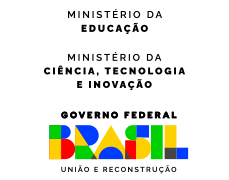Brief history
Created on October 15, 1952, IMPA was the first research unit of the National Research Council (CNPq), a federal funding agency founded only one year earlier. Today, it is one of the most respected institutions in Brazilian science and one of the most renowned centers for mathematical research in the world.
The basis for its success is the fact that IMPA has always been committed to the excellence of its scientific staff, through the strictest criteria in hiring its researchers, as well as in selecting its post-doctoral fellows and students. Furthermore, the institute has always been open to launch new initiatives and partnerships for the advancement of mathematics in Brazil and in the region.
Since its inception, IMPA’s mission has been the encouragement of scientific research, the training of new researchers and the diffusion and improvement of mathematical culture in Brazil. These activities, linked together, aim at promoting the knowledge of mathematics, which is fundamental for the development of science and technology in general, and in turn essential for the economic and social progress of the country.
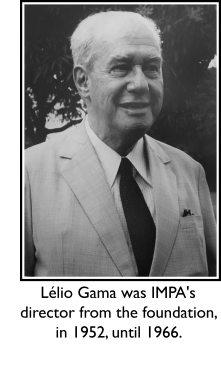 Early beginnings
Early beginnings
At the time of its creation, IMPA did not have its own headquarters: it was temporarily housed in a room at the headquarters of the Brazilian Physics Research Center (created in 1949), at Praia Vermelha, in the southern part of Rio de Janeiro. The scientific staff was also small, although illustrious: besides the director, astronomer Lélio Gama, who also headed the National Observatory, the institute had only the young mathematicians Leopoldo Nachbin and Maurício Peixoto.
Gama’s experience and wisdom at the head of IMPA played a crucial role in the creation and consolidation of the young institute. Nachbin and Peixoto would later be the first Brazilians invited to give lectures at the International Congress of Mathematicians, which is one of the greatest distinctions in the career of a mathematician.
Other mathematicians and scientists contributed to the consolidation of the institute, such as Professor Maria Laura Mouzinho, who served as Secretary General of IMPA from 1953 to 1956. Professor Maria Laura was the second Secretary General, succeeding Professor Maurício Peixoto and being succeeded by Professor Manoel Teixeira da Silva.
The academic prestige of IMPA began to grow in 1957, with the organization of the first Brazilian Mathematics Colloquium, with about 50 participants. The Colloquium has been held every two years since then, without interruption. Much of Brazilian mathematics was built around it.
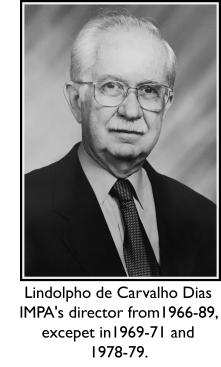
Consolidation
In 1957, IMPA moved to São Clemente Street, in Botafogo, also in the southern part of Rio de Janeiro.
In 1962, the Master’s and Doctoral programs in Mathematics began, through an agreement signed with the Federal University of Rio de Janeiro, which officially granted the Master’s and Doctoral degrees.
In 1967, IMPA moved again to a historical building on Luiz de Camões Street, downtown Rio de Janeiro, which today houses the Hélio Oiticica Cultural Center.
The following year, with the support of the National Bank for Economic Development (BNDES) and later the Financing Agency for Studies and Projects (FINEP), as well as CNPq itself, IMPA expanded its staff with Brazilian mathematicians working abroad or in the final stages of doctoral studies at the best foreign institutions.
Also in 1968, Lindolpho de Carvalho Dias took over as director, and he would lead the consolidation and growth of the institute over 22 years, with emphasis on the construction of its own headquarters in the Jardim Botânico neighborhood (south zone), inaugurated in 1981.
Growth and opening to education 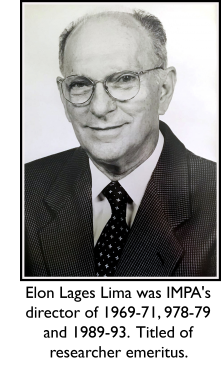
In the 1970s, institutional changes at CNPq allowed IMPA to make a qualitative leap and expand its activities, including the creation of its own permanent body of researchers. Until then, IMPA researchers were supported by scholarships or had positions in other institutions.
Thus, new research areas were created, such as algebraic geometry, differential geometry, probability, statistics, operations research, optimization and mathemat
ical economics. Previously, activities were concentrated in dynamical systems, analysis, and differential topology. Later on, the fields of partial differential equations, fluid dynam
ics and computer graphics would be consolidated and, more recently, symplectic geometry and discrete mathematics.
In 1971, IMPA became the first mathematical institution mandated by the Federal Council of Education to grant master’s and doctoral degrees, which allowed the master’s and doctoral programs to acquire a regular character. Since then, academic graduate studies at IMPA have always received top rankings in the evaluation by the Coordination for the Improvement of Higher Education Personnel (CAPES).
A fundamental milestone in IMPA’s history was the construction of its own headquarters in Horto Florestal, inaugurated in July 1981 with the celebration of an International Symposium on Dynamical Systems.
On two occasions during his term Carvalho Dias was replaced as director by Elon Lages Lima, also elected director for the period 1989 to 1993. Lima put his enormous academic prestige at the service of the education cause: the High School Teacher Improvement Program, which he created in 1990, opened a new and important front for the institute’s activities.
Internationalization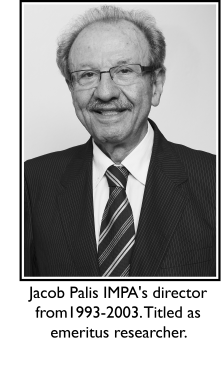
In 1993, Jacob Palis was elected director, and held the position for ten years. It was a period of remarkable growth in the international prestige of the institute, which even hosted the International Mathematical Union (IMU) from 1991 to 1998, when Palis was secretary-general of the Union. Another important fact of his tenure was the qualification of IMPA as a Social Organization, in 2000.
In 1994, the Ministry of Science and Technology Commission that evaluated his institutes concluded that “IMPA’s excellence makes it a model of what a national institute for basic research should be, and it should be provided with the conditions that will enable it to preserve this excellence.
The following year, IMPA hosted an international meeting in which the Mathematical Union of Latin America and the Caribbean was created. Much later, in 2011, the institute would again host the creation of an international organization in mathematics: the Mathematical Council of the Americas.
In 2000, IMPA was formally transferred from CNPq to the MCT. In parallel, studies began a year and a half earlier aimed at the possible transformation of IMPA into a Social Organization, which was completed a year later. The new operating model, while keeping the institute in the public sphere, gave it greater administrative flexibility, as well as more visibility and transparency in its activities.
Strengthening of the social action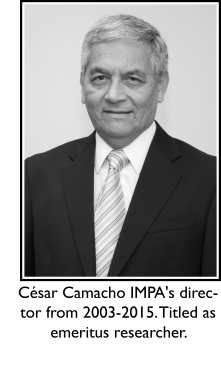
The trend towards internationalization at IMPA became more pronounced during the administration of César Camacho, from 2004 to 2015, which was also characterized by a substantial renewal of the scientific staff, with the hiring of young researchers. In 2005, the OBMEP (Brazilian Public School Mathematics Olympiad) was created, an unprecedented experience with an important social impact that clearly underlines IMPA’s commitment to the dissemination of mathematical knowledge.
The OBMEP is held annually by IMPA with the support of the Ministry of Education and the Ministry of Science, Technology, Innovation and Communications, and with the collaboration of the Brazilian Mathematical Society (SBM). The Olympiad is attended by almost the entire student population from the 6th grade of elementary school to the end of high school. As of 2017, it is open to all Brazilian schools, public and private.
In 2004 a contract was signed with the Centre National de la Recherche Scientifique (CNRS), the main French scientific funding agency, through which IMPA was qualified as a CNRS International Mixed Unit (UMI). This qualification allows some of the best French mathematicians to carry out long term internships at IMPA at no cost to the institute.
The contract with the CNRS has been renewed successively every four years, by agreement of both parties. As of 2016, the UMI is named after Jean-Christophe Yoccoz, French mathematician who won the Fields Medal in 1994, emeritus researcher and great friend of IMPA.
In 2011, IMPA joined the network of higher education institutions throughout the country that run the National Professional Master’s Degree in Mathematics (PROFMAT), a semi-attendance graduate program aimed at training basic education mathematics teachers, coordinated by the Brazilian Mathematics Society with IMPA’s support.
International prominence
In 2014, Artur Avila, a researcher and doctoral student at IMPA, was awarded the Fields Medal, the most prestigious distinction in world mathematics.
In the same year, IMPA was honored with the right to organize two major events in the world mathematical calendar: the 2017 International Mathematical Olympiad (IMO) and the 2018 International Congress of Mathematicians (ICM), both in Rio de Janeiro.
At the end of 2015, Marcelo Viana, the first director who is also a PhD alumnus of IMPA, took over as director.
In 2016, following an initiative originated at IMPA, the National Congress passed the Mathematics Biennium Law (Law 13.358), which dedicates the years 2017 and 2018 to the cause of mathematics, in honor of the holding in the country of IMO 2017 and ICM 2018.
Along with the organization of these two events, the period of the Biennium of Mathematics represents a huge effort by IMPA to bring mathematics closer to Brazilian society, through initiatives such as the Festival of Mathematics, launched in 2017.
In 2018, IMPA and SBM led Brazil’s successful application to join the elite group (Group 5) of the International Mathematical Union, along with the ten most advanced nations in the world in the field.
In the same year, the cornerstone was laid for the new IMPA campus, on land adjacent to the one the institute currently occupies in the Jardim Botânico neighborhood, donated for this purpose by private sponsors in 2014. The new campus will allow for a substantial expansion of IMPA’s activities and, consequently, of its capacity to act on behalf of science and education in Brazil.
